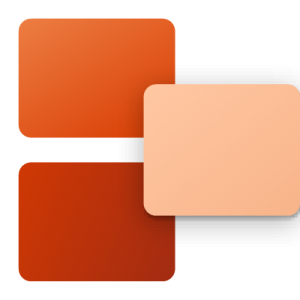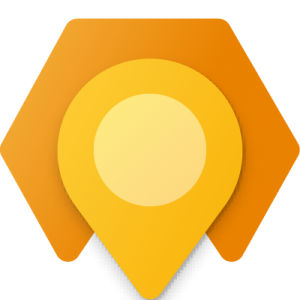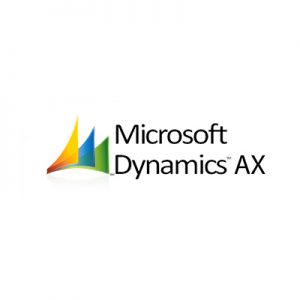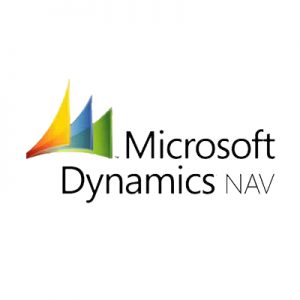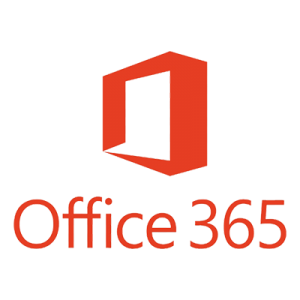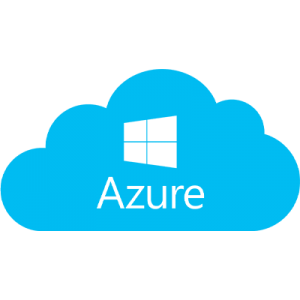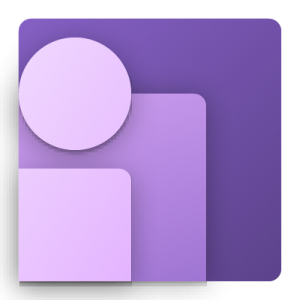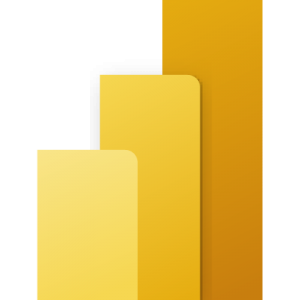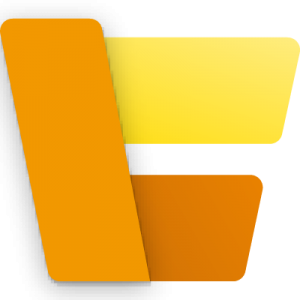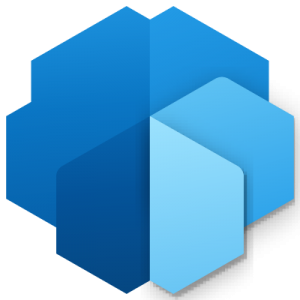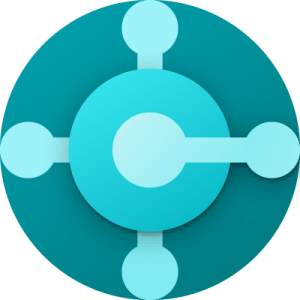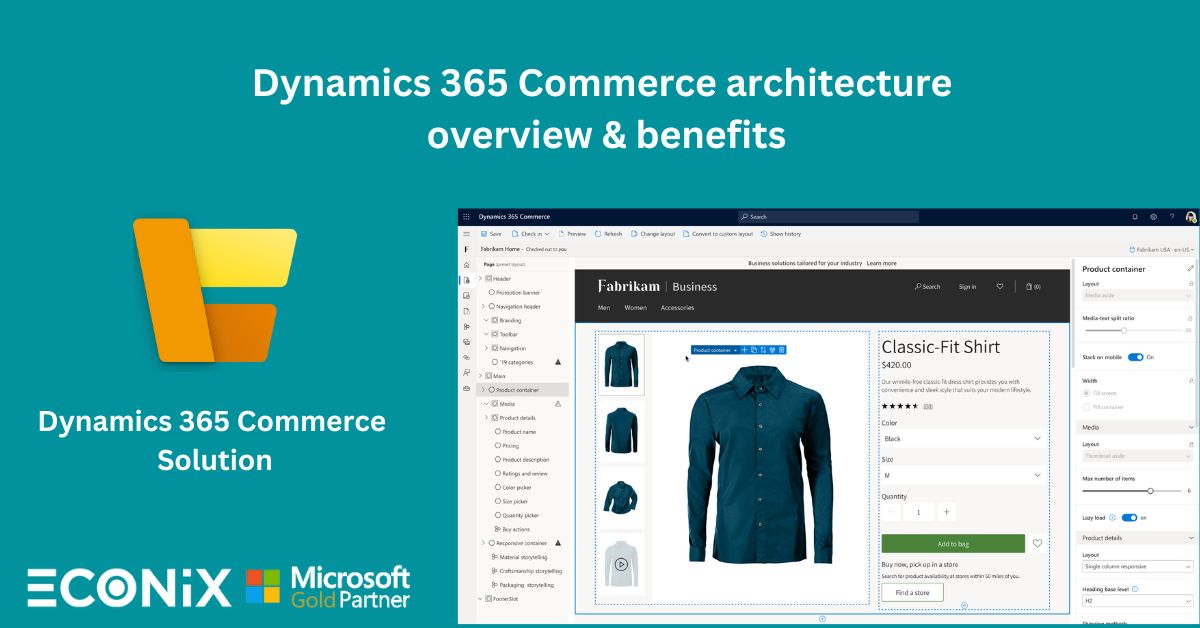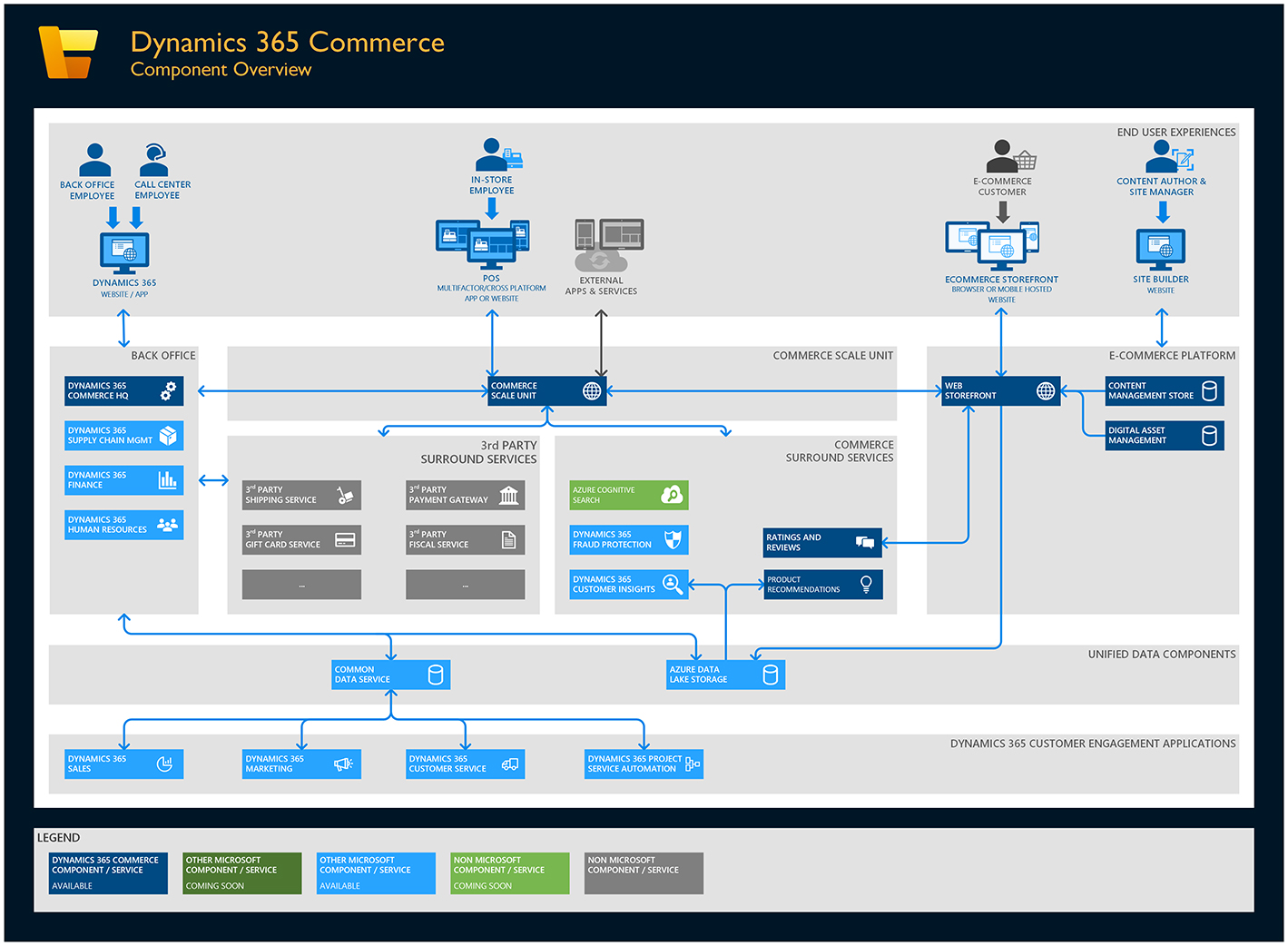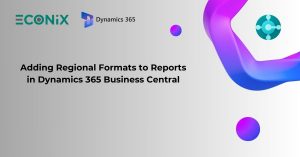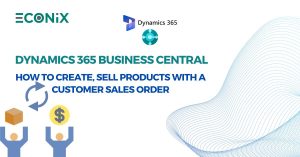Dynamics 365 Commerce provides a unified data solution through out-of-the-box integrations with Microsoft Dataverse and Azure Data Lake Storage. Integrations and data sharing across Dynamics 365 apps such as Dynamics 365 Sales and Dynamics 365 Marketing are supported through Microsoft Dataverse.
Because of the accessible, persistent, up-to-date, and unified organizational data that is available in Data Lake Storage, the whole organization has a “single source of truth” that analytics, artificial intelligence (AI), and machine learning (ML) can be applied on top of. In this way, the organization can derive insights and get key performance indicators (KPIs) that can be used optimize and automate business processes across all channels.
Dynamics 365 is a collection of applications that together provide comprehensive and flexible enterprise resource planning (ERP) solutions for medium to large businesses. It provides an extensible framework and ecosystem that can be tailored to customer-specific requirements via an extensive set of partners. Dynamics 365 applications provide capabilities for their target business segments. They also take advantage of each other, and other Microsoft services and offerings, to provide solutions that help run customers’ complex businesses.
POS simplifies the experience for the retailers by providing Omnichannel solutions in emerging channels. These channels perform a variety of commerce business operations like cash and carry transactions, cash/shift management, customer engagement, assisted selling, clienteling, endless aisle, order processing/fulfillment, inventory management, and reporting.
The Store Commerce app is a cross-platform (Windows, iOS, and Android), multi–form factor (desktop, tablet, and phone) solution for all in-store first-line workers, such as cashiers, sales associates, stock clerks, and store managers. It can be deployed as an app that has offline capabilities. In addition to standard “cash and carry” transaction processing, Store Commerce includes features for assisted selling, clienteling, endless aisle, order processing/fulfillment, inventory management, cash/shift management, and reporting. For more information, see Modern POS (MPOS) architecture and Choose between Store Commerce app and Store Commerce for web.
The e-commerce storefront is the customer-facing website rendering system. It’s built on the React.js framework, and uses a combination of server-side and client-side rendering to deliver responsive web experiences for one or more online channels. Although the storefront has a rich set of out-of-box capabilities, it’s also highly customizable, and delivers an efficient and scalable solution for online business. For more information, see Online store overview.
Site builder is the web-based authoring interface for the content management and storefront website rendering systems. Visual page builder in site builder is a what-you-see-is-what-you-get (WYSIWYG) editor for site managers and content authors who perform the day-to-day workflow tasks of managing and producing the marketing content for the e-commerce experience.
The headless commerce engine that is exposed via the Commerce Scale Unit lets partners and customers take advantage of all the same channel-side capabilities and business logic that are used by the out-of-box e-commerce and point of sale (POS) components. Therefore, by tapping into the same data and business process capabilities, it allows for seamless omni-channel capabilities across out-of-box channel components and partner-provided/customer-developed services and applications.
The Dynamics 365 Commerce application, which is often referred to as the Commerce headquarters component, provides back-office capabilities that enable the configuration of products, employees, business processes, and other functionality that is required for the business. It’s also the application that call center workers use to provide assisted commerce-related workflows.
Dynamics 365 Supply Chain Management provides functionality to help you manage your products throughout the supply chain lifecycle, from production, to inventory and warehouse, to transportation and distribution. For more information, see Help resources for Supply Chain Management.
Dynamics 365 Finance provides functionality to automatically manage your global finances. For customers of the Dynamics 365 Commerce application, Dynamics 365 Finance offers an integrated experience for managing stores and e-commerce financial statements alongside the rest of their operations. For more information, see Dynamics 365 Finance help resources.
Dynamics 365 Human Resources lets businesses get a comprehensive view of their employee resources and manage them in a unified way. It provides integrated experiences from the hiring process through workforce planning and employee time management. For more information, see Dynamics 365 Human Resources help resources.
A fully featured content management system (CMS) is integrated directly into the e-commerce platform. In addition to rich indexing features, the CMS provides lifecycle management for marketing materials that supplement the product information that is managed by the headless commerce engine. It includes features for localization and multi-item publishing through releases.
Commerce digital asset management extends the content management store, and keeps track of images, videos, and file downloads that are served by the web storefront site. Its image resizer service optimizes downloaded images for different devices and contexts. In this way, it helps enhance performance while it also manages image quality. Digital asset management is also integrated with Azure Media Services for efficient playback of video streams.
The CMS stores its pages as a series of modules. The storefront web server assembles those modules into a rendered HTML page. The web storefront is composed of the rendering platform, the commerce data proxy, and the extensibility layer. Those components form a base that is supplemented by a set of modules that power a web-based commerce experience, the Dynamics 365 Commerce module library.
Dynamics 365 Fraud Protection is integrated into the e-commerce checkout flows that are managed and processed through the Commerce Scale Unit. The connection to the service is automatically provisioned with the Commerce Scale Unit, and customers who sign up for Dynamics 365 Fraud Protection can enable and configure the integration in Commerce headquarters.
Dynamics 365 Customer Insights helps you gain a deeper understanding of your customers by connecting data from various transactional, behavioral, and observational sources to create a 360-degree customer view and generate insights. Dynamics 365 Commerce makes it easy for retailers to enable the integration with Dynamics 365 Customer Insights and show the generated insights at the POS.
Azure Cognitive Search is integrated into Commerce to provide consistent product discovery and search experiences across all of the Commerce channels that use the Commerce Scale Unit (CSU). With integrated Azure Cognitive Search, customers can quickly find products by browsing categories, searching, and filtering.
The Commerce ratings and reviews solution lets online retail customers enter product reviews and ratings through the e-commerce storefront. Retailers can then show averaged ratings and review information across their e-commerce websites.
Customers who bring their own Azure Data Lake Storage accounts can take advantage of structured business data from back-office operations and clickstream data from the e-commerce storefront. This data flows back into intelligence services such as product recommendations, customer insights, and commerce analytics to power customer-centric business processes and user experiences. Those business processes and user experiences can then be embedded back into Dynamics 365 Commerce headquarters, the POS, and e-commerce storefronts. For more information, see Make Entity store available as Data Lake.
Dataverse is the unified data store that integrates the data from all your business applications. Dynamics 365 applications such as Dynamics 365 Sales, Dynamics 365 Customer Service, and Dynamics 365 Commerce use Dataverse to store business data. Therefore, Dataverse enables cross-business application scenarios, and can power new scenarios through Power Apps and Power Automate. For more information, see What is Microsoft Dataverse?.

